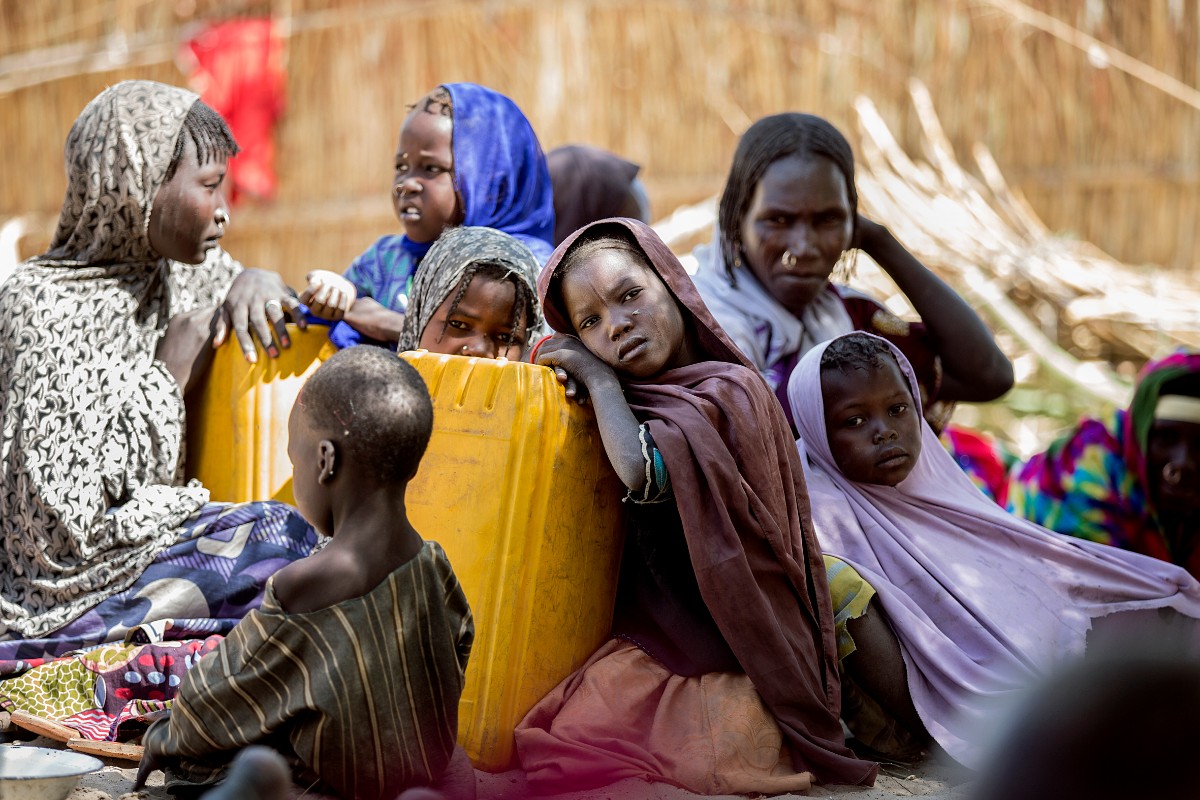 Photo courtesy of utenriksdept on Flickr, CC BY-NC-ND 2.0
Photo courtesy of utenriksdept on Flickr, CC BY-NC-ND 2.0
Lake Chad remains stable, yet Boko Haram still thrives. Part 2: The extremists
Terrorist groups thrive in complex humanitarian crises; Lake Chad is one such crisis. Since Boko Haram evolved from an Islamist sect into an armed insurgency in 2009, its stranglehold over the Lake Chad Basin has deepened.
After its founding in 2002 in Nigeria’s northern Borno state, Boko Haram’s increasing radicalization led to suppression operations by the Nigerian military. Following the execution of its leader in 2009, and unexpected resurgence following a mass prison break, the organization executed increasingly violent attacks against police, UN offices, and civilians. The insurgency led to mass migrations out of Nigeria into neighboring Cameroon, Chad, and Niger.
The following time-series shows Boko Haram activity (1997 – present) along with water level changes in Lake Chad. The maps show an increase in activity around 2002 and a notable uptick after 2011, following the group’s improved operational capabilities.
https://www.youtube.com/watch?v=gEDWniq7sfQ
Video by Laura Sigelmann, 2019 (all rights reserved). Data from ACLED and Landsat 1-8.
How climate change fuels extremist recruitment
A recent report by think tank adelphi addresses the linkage between climate change and Boko Haram recruitment. “The report does not say that climate change creates terrorists,” author Lukas Rüttinger told Climate Home. “But climate change changes the context in which these groups operate – it contributes to creating the conditions in which those groups can thrive. We can observe that already.”
While the decision to join a terrorist organization is personal and complex, the deteriorating conditions in the Lake Chad basin and effects of climate change worsen people’s core vulnerability. Compounding the effects of forced displacement, restriction of movement, poor social cohesion, and regional instability, climate change reduces communities’ ability to plan ahead and adapt to abrupt changes. Conflict can also occur over who has access to scarce resources, particularly between farmers and pastoralists. These interwoven factors worsen each other, continually reducing livelihood options for already at-risk communities.
Without livelihood alternatives, individuals may turn towards negative coping mechanisms.
Boko Haram has been known to offer small loans to followers, pay members to kill officials, rob banks, or simply promise money to potential recruits. For communities facing starvation and poverty, in an unstable region with little government infrastructure, and a social system drastically changed by conflict and refugees, the promise of financial stability is an alluring option.
More droughts, increasing temperature, and erratic rainfall in the Sahel will likely deepen poverty and food insecurity in the region, aiding Boko Haram’s financial recruitment techniques. As Boko Haram gains strength and the region’s instability deepens, more communities are vulnerable to its recruitment techniques. This creates what is known as a “conflict trap,” perpetuating the cycles of poverty, violence, and extremism.
Going forward
Boko Haram is unlikely to be defeated with solely military methods. The complexity of the crisis means that a multidimensional response must tackle the drivers of conflict and extremism. Improving regional stability, environmental resource availability, and social relations are critical to reducing extremism and rehabilitating the Lake Chad Basin.
Several donor-driven programs have aimed to restore local governance and services, repair social systems and cohesion, and reintegrate former combatants. These bottom-up methods are critical to address the root drivers and reduce the incentive to join extremist organizations.
Good transnational water management is also critical for strengthening the resilience of livelihoods and addressing the drivers of extremism. The Lake Chad Basin Commission and African Union commission adopted a Regional Stabilisation, Recovery and Resilience Strategy, which offers hope for comprehensive transnational cooperation.
However, the lake desperately needs improved monitoring systems, which requires better funding, oversight, operation, and cooperation. This is particularly important in the face of climate effects, which will likely cause the lake’s waters to fluctuate more wildly. Any future planning around stabilization, peacebuilding, and development must consider how climate change will deepen existing vulnerabilities.
Ultimately, addressing the drivers of insecurity in a multidimensional way offers some hope towards stemming the tide of conflict in Lake Chad basin.
This is the second post of a two-part series. For Part 1, on the evolution of Lake Chad, click here.






